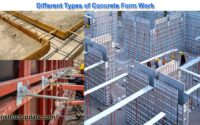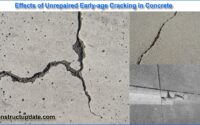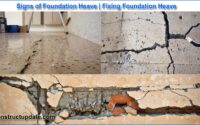What is Wood | Top 35 Types of Wood | Advantages of Wood as Building Material
What Is Wood?
Wood is a lovely natural material that offers a long-term sustainable option for countless uses. The trunks and branches of trees are the part of nature from which wood originates because it is an organic material.
A piece of lumber is made up of a wood construction and its component parts. The stems and roots of trees and other wood plants contain the fibrous and porous structural material known as wood.
Types of Wood
1. Akasa Wood
Grey-brown in colour, Akasa Wood is a hard variety of heartwood and sapwood. Akasa wood is mostly used in plywood, turnery, flooring, interior joinery, utility furniture, and light structural work.
2. Ash Wood
Ash wood is a smooth-grained, light-colored hardwood that shines when polished. It is an open-grained, durable structural wood. Any colour of your choosing can be stained on ashwood.
3. Maple Wood
Maple is one of the hardest wood species, and it can be found throughout Canada. It is a strong, long-lasting wood with excellent knock resistance. All sorts of woodworking appreciate using maple because of its distinctive colour, smooth texture, and high strength in its natural state.
4. Oak Wood
Oak wood is a hefty, sturdy, and straight-grained type of wood. It has a high strength and a high density of 897 kg/m3, making it a popular material in the construction sector.
5. Balsa Wood
Despite being a hardwood, balsa wood is one of the softer and lighter types of wood. Balsa wood has a superior strength to weight ratio compared to other types of wood. It has great fire performance and is an environmentally friendly product.

6. European Oak Wood
European nations including France, England, and Germany are the native home of European oak wood, as the name implies. Europan oak wood is a light yellow-brown colour.
7. Bamboo Wood
Bamboo is a sturdy wood with a lovely golden colour. Bamboo, which has a tensile strength greater than steel, is used to make bamboo wood. Compared to other hardwoods like oak, bamboo wood is two to three times tougher.
8. Cedar Wood
Lightweight softwood was utilised in the main. likewise practical for construction work.
9. Celtis Wood
Celtis wood has a straight grain that can occasionally interlock. It has a fine texture, a slightly shiny appearance, and heartwood and sapwood that have a yellowish grey colour.
10. Beech Wood
Beechwood is a tough, long-lasting wood that can be found in its natural state. It comes in a variety of warm, mellow honey tones. And give beech wood a distinctive red colour.
11. Greenheart Wood
Greenheart wood has a high degree of durability and insect resistance. The average modulus of elasticity of greenheart, which is among the stiffest woods in the world, is 3,716,000 lbf/in2. Greenheart is three to four times stronger than fir or pine wood and doesn’t need to be treated.
12. Meranti Wood
Meranti wood is a hardwood that is divided into 5 categories according to the colour of the heartwood. Dark red meranti, light red meranti, white meranti, yellow meranti, and balau are the five various colours that it is available in.
13. Pine Wood
Compared to other conventional hardwoods, pine wood is a cheap hardwood that is more readily available in nature. Pinewood comes in a variety of colours, from almost red to pale yellow.
14. Brazilian Mahogany Wood
In the US, Brazilian mahogany is frequently referred to as genuine mahogany. Compared to African mahogany wood, Brazilian mahogany wood is denser.
15. Pitch Pine Wood
Pitch pine, or Pinus rigida, is a medium-textured straight-grained wood. North America is the natural home of pitch pine. The American pine softwood is stronger and more resilient than other pines. Its wood has a coarse texture and is densely resinous.
16. Poplar Wood
Poplar wood has a bright, delicate tint that ranges from creamy yellow to light brown. Poplar wood’s sapwood has a somewhat paler hue than its heartwood.
17. Teak Wood
Teak wood is a fine-grain, yellow-brown hardwood with a smooth texture. Furniture and window and door frames are made of teakwood.
18. Conifer Wood
Coniferous or cone-bearing trees produce conifer wood. These evergreen trees yield softwood lumber and feature needle-like leaves. 90% of the tracheids of conifer wood, which is a homogenous structure, are made of wood cells. Conifer wood is mostly used to create paper, crates, and boxes.
19. Cherry Wood
Cherry wood furniture is the most expensive hardwood furniture in the Nation. Cherry wood is the greatest option for flooring and wall panelling due to its natural beauty and grain patterns. Cherry is a reddish brown to blonde deciduous hardwood.
20. Walnut Wood
A dark, dense, tightly grained hardwood is walnut wood. Its appearance ranges from dark brown to whitish. Although the grain of walnut wood is often straight, there are times when it might be uneven.
21. Dahoma Wood
A hardwood with a yellowish to reddish brown hue called dahoma wood. Dahoma wood is often produced by trees that are 1 metre in diameter and 30 metres tall.
22. Sitka Spruce Wood
Straight-grained Sitka spruce wood has a beautiful, consistent texture and a high strength to weight ratio. The largest of the spruces, it may reach heights of 100 metres and a diameter of 2 metres. The Pacific shore is where you can find it. Softwoods like Sitka spruce are typically used for plywood, general construction, and shipbuilding.
23. Southern Yellow Pine Wood
One of the primary sources of softwood in the United States is southern yellow pine. It grows in the southwest and south of the US.
24. Khaya Wood
African mahogany, often known as khaya wood, is regarded as a substitute for American mahogany. Although having less durable working qualities than mahogany, it is employed as a substitute.
25. Utile Wood
West Africa is home to plantations of useful timber. It is a beautiful wood used for plywood, countertops, cabinetry, decorative veneers, interior and exterior door and window frames, and furniture. Moreover, it is utilised in the manufacture of boats, sporting goods, and musical instruments.
26. Danta Wood
Danta wood has a reddish brown heartwood and has a light brown colour with pink undertones. Danta wood’s surface provides a shiny appearance. High-end joinery, cabinetry, benchtops, boat parts, and decking work frequently employ danta wood.
27. Elm Wood
Elm is a hardwood with grains resembling those of oak. Elm wood has equally varied and straight to wavy grain patterns. Elm’s sapwood is off-white, while the heartwood ranges in colour from light to medium reddish brown.
28. Opepe Wood
Tropical hardwood from Central and Western Africa is called opepe. Opepe wood is a sturdy, strong wood that weighs about average compared to other woods. The tree’s height ranges from 35 to 50 metres, and its diameter ranges from 1 to 2 metres.
29. Sapele Wood
On the quarter-sawn surfaces, sapele wood displays distinct and regular stripes. Wood has an interlocking, closed grain. More weighty than African mahogany is sapele. It is 3 to 5 feet in diameter and 100 to 150 feet in length.
30. Iroko Wood
Iroko wood contains uneven and interlaced yellow-brown hardwood grains. West Africa is where you can usually find this wood. Teak wood is more expensive than iroko wood, which is mostly utilised in construction and exterior joinery.
31. Whitewood European Wood
Whitewood In Europe, the Russian Common Wealth, and the Baltic States, European timber is grown. It is a commercial subgroup of lustrous softwood that ranges in colour from white to pale yellow-brown. It is employed in flooring, joinery, and building.
32. Ligneous Wood
Compared to teak, pine, etc., igneous wood is comparably less expensive and more economical. Bagasse, bamboo, flax or hemp shives, and cereal straw are the sources of igneous wood. Cabinets, kitchen cabinets, and other items are made from lignified wood.
33. Douglas Fir Wood
Douglas fir wood is especially popular due to its remarkable strength-to-weight ratio. As a result, it can be applied to difficult structural tasks like building columns and beams. Moreover, glue-laminated beams and doors use it.
34. Okoume Wood
Only the forests of Gabon contain okoume wood. Okoume wood is a softwood that resembles mahogany in appearance and has a fibrous texture and uneven grains.
35. Redwood, European
A softwood, European redwood is often referred to as Scandinavian redwood or Pinus sylvestris. Scandinavia, the Baltic States, and the Russian Commonwealth are home to redwood. In the UK, it is often referred to as British pine or Scots pine.
The Advantages of Wood as a Building Material
Building with wood is both popular and historically significant. Nonetheless, there has been a shift in recent years in favour of manufactured goods or metals like aluminium.
Although it has good intentions, the desire to not rely on the world’s forests for building needs is not as environmentally conscientious as one might expect.
Wood’s Characteristics
Tensile strength
Despite being a lightweight building material, wood is more effective than steel at breaking length (or self-support length). Simply put, it is better able to sustain its own weight, allowing for greater spaces and less supports to be required in some construction designs.
Electrical and heat resistance
When dried to conventional moisture content levels, which for the majority of wood species are typically between 7% and 12%, wood has a built-in barrier to electrical conduction. The foundation of one kind of moisture measurement device is in fact this conductivity. Heat has no discernible impact on its strength or size either. The final building is stabilised as a result, and fire conditions are made safer.
Sound absorption
Wood’s natural acoustics make it the best material for reducing echo in homes and offices. In contrast to reflecting or enhancing sound, wood absorbs it. For added comfort, this can dramatically lower noise levels.
Beauty
Wood may be used for many different aesthetics because there are so many different species available. Moreover, various species can offer a range of mechanical, acoustic, and thermal qualities.
Wood’s Green Advantage
The environment is a major worry in the era we live in. In order to stop deforestation and control greenhouse gas emissions, wood was for a while outmoded as a building material.
Wood is Renewable
Wood is a building material that, unlike concrete or metals, can be produced and regrown using natural processes like replanting and forestry management programmes.
While larger trees are being taken, growth can continue thanks to measures like selective harvesting.
The woods are effectively and organically eliminating carbon dioxide from the atmosphere as they expand (using solar energy). It’s an extra that only wood has.
Wood is Readily Processed for Use
Wood has a less detrimental effect on the environment than other building materials like steel or concrete. Its production expenses are consequently lower.
Particularly when compared to steel, the manufacturing of wood also has less of an environmental impact.
These advantages increase as forest management and regeneration efforts expand.
Reduce Volatile Organic Compound Emissions from Wood
As a natural building material, wood emits lower volatile organic compounds (VOCs) and carbon dioxide off-gasses than aluminium, steel, concrete and plastics. But, this is not true of engineered wood products or composite wood products.
Improved Energy Efficiency via Wood
Wood has a greater insulation value than both steel and plastic due to its inherent cellular structure. This implies that maintaining heating and cooling requires less energy for houses and businesses. Wood can also, to a certain extent, help control humidity levels. It’s been said that a 22-inch concrete floor has the same insulating value as a hardwood floor put over a wooden subfloor.
Wood is Biodegradable
The fact that many building materials, such as concrete, metal, and plastic, take an absurdly long period to degrade after being used is one of the largest problems.
Wood will decompose considerably more quickly in the presence of a natural climate, replenishing the soil as it does so.
On the other hand, knowing how moisture and wood decay work means that under ideal circumstances, a building’s or floor’s lifespan can easily outlast a tree’s!





